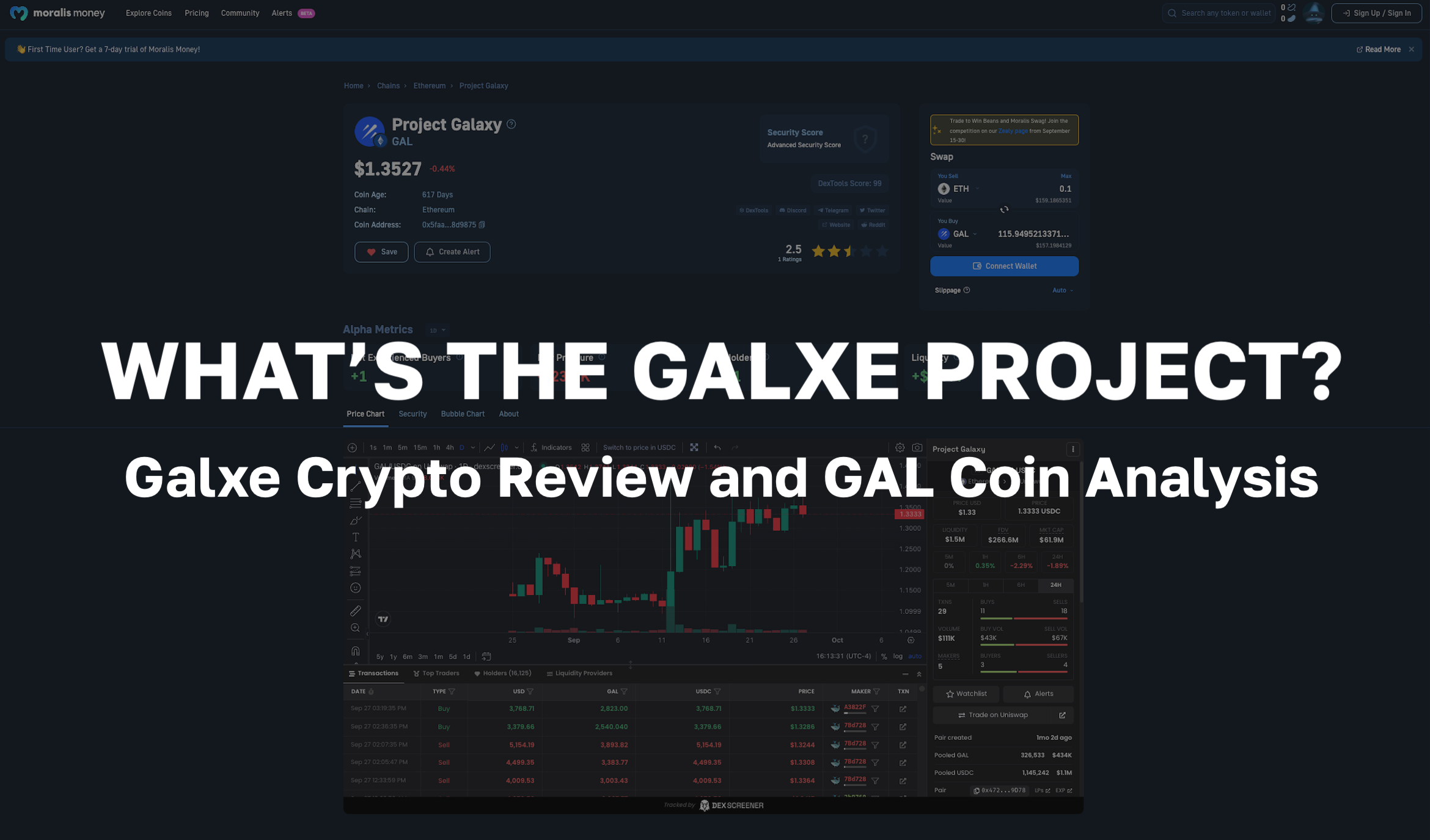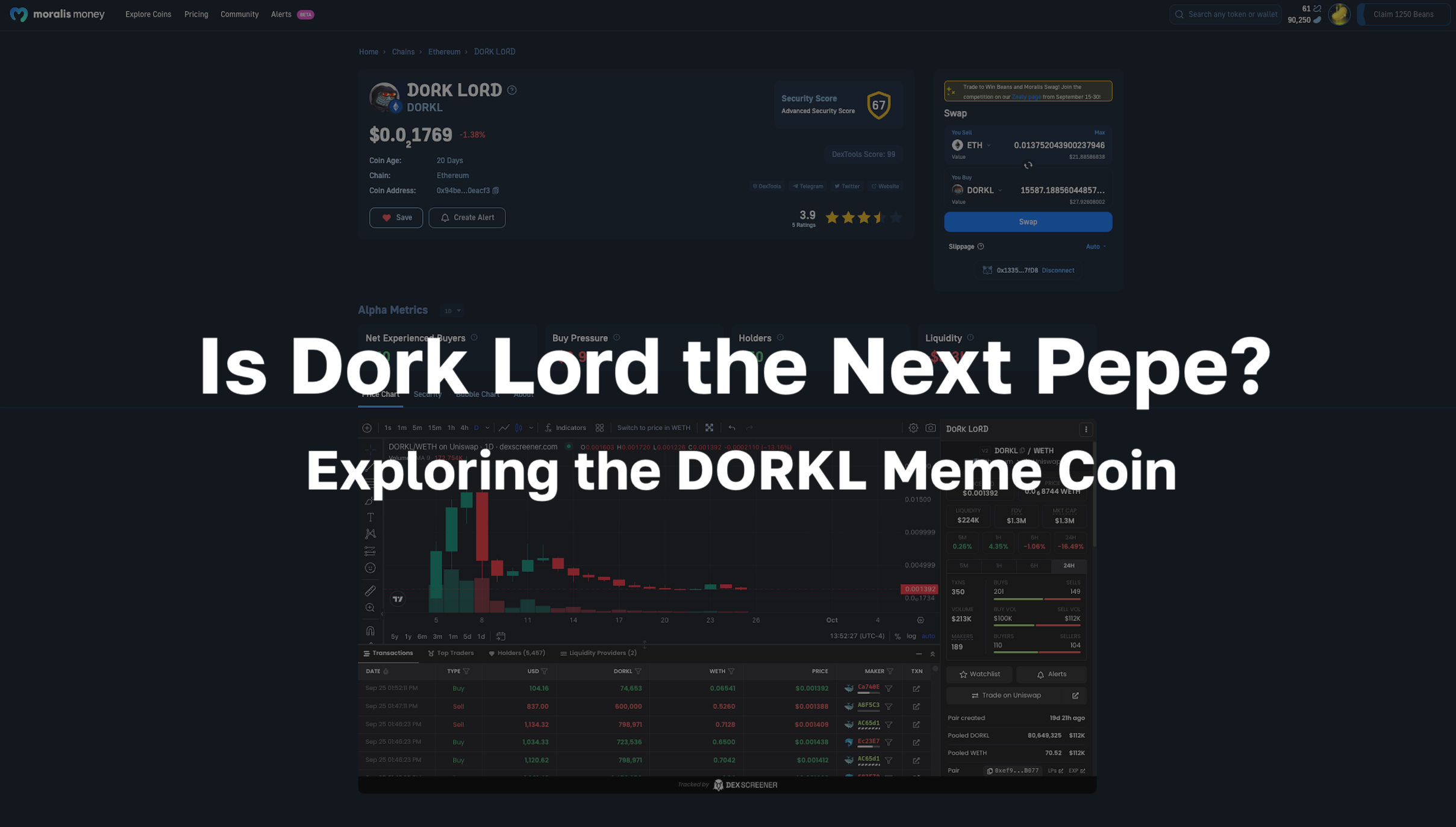In this article, we’re going to dive deep into the world of crypto staking. Also, we’ll explore the top crypto staking platforms and discuss the five best places to lock up your crypto assets and earn staking rewards. Plus, we’ll take a look at some of the risks to watch out for when staking.
Moralis Academy is the ultimate Web3 and blockchain education suite online with a community of over 30,000 students! Check out the Blockchain & Bitcoin 101 course to gain a firm understanding of blockchain and the foundations of decentralized technologies. In addition, if you know how to program and would like to test your development skills, check out the Moralis blog. There, we put programmers to the test in various challenges and tutorials!
What is Staking?
Staking is an investment strategy that enables crypto holders to earn a passive income by putting idle assets to work. Those staking can earn compounding staking rewards by locking up crypto assets, similar to a high-yield savings account with a bank. Users deposit funds, which the bank, or in this case, the crypto staking platform, lends to others. Legacy financial instruments return a small portion of any interest earned from this borrowing. However, crypto holders can retain a much higher portion of earnings.
There are several ways to participate in staking. One of the simplest ways is “soft staking” with a centralized exchange (CEX). When users deposit funds into a soft staking account with a CEX, they get the opportunity to earn steady staking rewards on top-tier crypto assets. Furthermore, staking with a decentralized finance (DeFi) protocol or decentralized exchange (DEX) allows users to stake a broad range of exotic crypto assets and participate in advanced investment strategies such as liquidity mining and yield farming.
Some staking platforms offer yields for locking up crypto assets over a predetermined period. Others offer flexible staking products that enable users to stake and withdraw at any time. Moreover, staking platforms cater to various levels of risk and technical ability.
Proof-of-Stake (PoS)
Another way to participate in crypto staking is through consensus. Proof-of-stake (PoS) is a cryptocurrency consensus mechanism that facilitates the creation of new blocks and validation of transactions in public blockchain networks. Consensus mechanisms allow every node in the network to agree on the validity of transactions and secure the blockchain. In PoS consensus, validators stake a certain amount of crypto assets. This gives them “skin in the game” and acts as a financial incentive for them to act honestly. If they act dishonestly and try to defraud the network, they could lose their stake and any future rewards.
Furthermore, PoS consensus was developed as an alternative to the resource-intensive proof-of-work (PoW) consensus mechanism used by the Bitcoin network. Not only does PoS use less electricity than PoW, but it is often less profitable to attack. Accordingly, PoS is commonly regarded as less risky than PoW. Also, PoS consensus reduces the amount of computational energy needed to validate transactions. Instead of competing for the right to validate transactions, PoS validators share the responsibility more equitably, without the need to expend energy by competing to solve complex math puzzles, as is the case in PoW.
PoS has become the go-to consensus mechanism for emerging blockchain projects. This is thanks to the high levels of security and low barrier to entry it offers. Furthermore, there are several variations of PoS consensus, including delegated proof-of-stake and proof-of-staked authority (PoSA). The goal of PoS is to reduce the reliance on PoW mining. Moreover, PoS helps reduce the environmental footprint of crypto mining and provides a sustainable alternative for transaction validation.
Top 5 Crypto Staking Platforms
Now it’s time to look at some of the top crypto staking platforms. There are several metrics we could use to determine the best staking platforms. Some investors look at the perceived security of a platform, while others simply look for the highest possible returns. Below, we’ve listed five of the top crypto staking platforms according to the number of active users, total value locked (TVL), reliability, and annual percentage yield (APY).
The aim is to provide a cross-section of the most-popular staking services and how they compare to one another. Because there are so many staking services available, there will inevitably be many that we don’t cover in this article. Follow us on Twitter @MoralisAcademy to let us know what your favorite platform is and why!
Coinbase
Coinbase is one of the most widely used crypto exchanges for beginners. It provides a straightforward onramp for new users and enables users to swap a wide range of crypto assets. Also, Coinbase is fast becoming one of the top crypto staking platforms thanks to its ease of use and high levels of security.
Coinbase users gain access to various yield earning opportunities. At the time of writing, Coinbase users can earn up to 5% APY on Cosmos (ATOM), 2.6% on Cardano (ADA), 2.33% on Dai (DAI), 4.63% on Tezos (XTZ), 1.67% on Tether (USDT), and 0.45% on Algorand (ALGO).
If you’re new to crypto and want to learn how to safely buy, sell, and trade crypto using Coinbase, check out the Crypto for Beginners course at Moralis Academy. Here, we teach students about the fundamentals of Web3 and the differences between Bitcoin, Ethereum, and altcoins. Plus, we provide tips to help you recognize and avoid scams. Start your crypto journey today with Moralis Academy!
Binance
Binance is the largest crypto exchange in terms of trading volume. It is a go-to platform for investors and traders of all levels. Also, the platform offers some of the most diverse and varied staking options of any crypto exchange via the “Binance Earn” portal. Products include Fixed Savings, Flexible Savings, Dual Investments, DeFi Staking, and Liquidity Farming.
Binance’s subscription-based Flexible Savings product offers an estimated 10% annual percentage yield (APY) on USDT up to the value of $2,000. The Binance Fixed Savings product offers a 5% APY on USDT when locking tokens up for 30 days and 9% when locking up for 60 days. Also, this product features an “auto-renew” function to compound interest payments. Plus, similar yields exist for a range of top crypto assets.
Furthermore, Binance Liquidity Farming offers a higher potential yield with the corresponding risk. This allows users to provide liquidity to farming pools. Users deposit equal values of two assets to earn transaction fees and flexible interest on more than 70 trading pairs. This includes single-digit APY on stablecoin pairs and top-tier crypto assets such as Ethereum (ETH), Avalanche (AVAX), Dogecoin (DOGE), Polkadot (DOT), and Chainlink (LINK). At the time of writing, users can earn an estimated 24.74% APY on APE/USDT (ApeCoin/Tether), 23.57% on AVA/USDT (Travala/Tether), 23.38% on GMT/USDT (STEPN/Tether), and 28.42% on SANTOS/USDT (Santos FC Fan Token/Tether).
In addition, advanced traders with an appetite for risk can earn more than 500% APY via the Binance Dual Investments product that enables users to buy low and sell high on two crypto assets without fees. This product is only for experienced investors and should be approached with caution. As with any financial product, remember to conduct your own research and never invest more than you can afford to lose.
Crypto.com
Crypto.com offers greater rewards to holders of the native Cronos (CRO) utility token. Users can select lock-up periods of one or three months and earn weekly compounding staking rewards on more than 40 crypto assets and stablecoins. This includes top-tier assets such as Bitcoin (BTC), Ethereum (ETH), Avalanche (AVAX), and Dogecoin (DOGE).
Also, the platform offers a range of DeFi staking services using partner protocols. Users can earn DeFi yields on more than 35 tokens via Yearn Earn V2, Compound, Aave, Crypto.org Chain Staking, and Cosmos Staking. Furthermore, these products have no lock-up period, so inventors can withdraw funds whenever they like.
PancakeSwap
PancakeSwap is a DeFi protocol on BNB Chain (formerly Binance Smart Chain). It is the leading DEX on BNB Chain, with over 4.4 million monthly active users and $6 billion in total value locked (TVL). According to stakingrewards.com, PancakeSwap has the highest estimated annual reward of any DeFi platform with 299.91% APY. Furthermore, the platform offers a broad range of staking and yield farming opportunities.
Users can lock up the native PancakeSwap token, CAKE, and earn staking rewards in “pools”, with rewards denominated in several different crypto assets. Also, liquidity providers can stake LP tokens in “farms” to earn additional staking rewards.
Olympus DAO
Olympus DAO is a decentralized reserve currency protocol. The native OHM token is a rebase token backed by a basket of high-performing and high-utility crypto assets rather than fiat currencies. The protocol’s primary value accrual strategy is staking. Participants lock up OHM tokens to earn compounding rebase rewards.
Those who stake will earn OHM rebase rewards approximately every eight hours. These rewards come from the sale of bonds, which enables participants to purchase OHM tokens at a reduced rate. Also, users receive an amount of staked OHM (sOHM) proportional to their OHM stake, which can be used to accrue additional value across many different DeFi platforms.
Olympus is one of the more advanced contenders in our top crypto staking platforms list. However, it has the second-highest estimated annual rewards after PancakeSwap. Save our “Olympus DAO Explained” article for later to learn more!
Staking Risks
Crypto assets are inherently risky. Accordingly, investors should always exercise caution when interacting with any staking platform. One of the most common risks associated with crypto staking is impermanent loss. Impermanent loss occurs when the value of your staked assets falls during your stake. If you stake a token and it falls in price, the staking rewards may not be enough to cover the losses you make. Furthermore, staking lock-up periods can make it difficult to access your assets in time to avoid impermanent loss.
In addition, staking requires you to hand over the custody of your assets. Even the top crypto staking platforms are susceptible to hacks and theft. In the case of DeFi staking, loss of funds can be permanent and irreversible. As such, it’s worth checking out the security of a staking platform before using it. Also, remember to find out the extent to which your funds are protected on any given platform.
If you plan on becoming a validator for a PoS blockchain, you can lose your staking rewards for failing to validate transactions correctly or maintaining constant uptime. Also, the cost of being a validator is shifting dramatically as global energy bills increase.
Top 5 Crypto Staking Platforms – Summary
Staking has become an incredibly popular way of earning a passive income by putting idle crypto assets to work. According to Staking Rewards, the total value of all cryptocurrencies staked reached more than $280 billion in April 2022. Crypto staking platforms come in many different forms. Investors can earn a passive income from PoS blockchains, centralized crypto exchanges (CEXs), and DeFi protocols. Accordingly, there are several ways to look at the top crypto staking platforms. For example, the top five crypto assets by staked value are Ethereum 2.0 (although still in development), Solana (SOL), Terra (LUNA), Cardano (ADA), and Avalanche (AVAX).
However, consensus participation is often not as flexible as soft staking with CEXs and generally provides lower returns than DeFi-based yields. That said, some consider participating in PoS consensus as a sustainable form of passive income. Also, if liquidity mining and yield farming are considered an extension of staking, DeFi protocols such as Curve, Anchor, Yearn, and Compound would likely fall into the top crypto staking platforms category.
Furthermore, staking as a service (SaaS) platforms such as Everstake, Blockdaemon, Figment, and MyCointainer enable users to maximize yields by delegating their stakes with nodes to participate in consensus across promising networks. However, these platforms require a higher level of technical knowledge than the top crypto staking platforms listed in this article.
If you want to learn how to interact with top DeFi protocols using MetaMask, the number one Web3 wallet, be sure to check out the DeFi 101 course at Moralis Academy. This course teaches students how to make the most out of DeFi protocols and understand the risks involved. Kickstart your DeFi journey today with Moralis Academy! Also, check out our “Quantum Computing and Blockchain”, “Exploring Chainalysis”, and “NFT Royalties Explained” articles to expand your Web3 knowledge!





